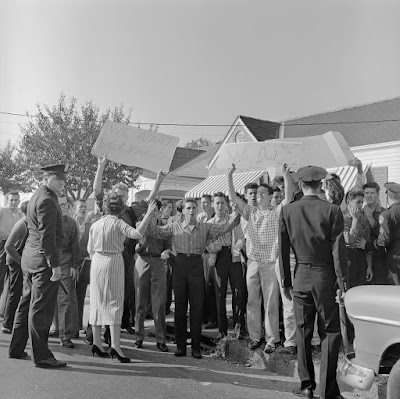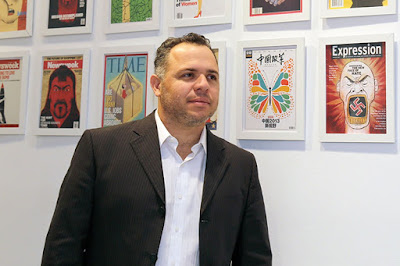Amid all the havoc of our times, the Oscar Best Picture mistake was almost a relief. (Not for the Moonlight or La La Land folks, I'm sure, but for most of the rest of us.)
By now you probably know that a duplicate envelope and card of Emma Stone's Best Actress award was given to the presenters, Warren Beatty and Faye Dunaway, instead of the Best Picture card. Beatty knew something was up, but it was such a weird situation that before anyone could stop to think enough, Dunaway had read off the name of the film Stone was in, without noticing that the card also included an actor's name (which doesn't make any sense for Best Picture, but if she even saw it, she probably thought it was a minor mistake).
Designer Benjamin Bannister has the solution for Price Waterhouse at future awards ceremonies, assuming they don't get fired: better typography on the award cards.
Here's what the winning card looked like:

Based on that, here's what the Emma Stone card probably looked like:

Bannister writes:
You are on television with millions of people around the world watching. You are a little nervous, and you have to read a card [without your reading glasses, I would add]. You will most likely read it from top to bottom without questioning whether the card is right. That look on Warren’s face was, “this says ‘Emma Stone’ on it.” Faye must’ve skipped that part and was caught up in the excitement and just blurted out, “La La Land.”He goes on to say:
I don’t blame Faye or Warren for this, this was the fault of two entities: whoever was in charge of the winner cards’ design...and the unfortunate person who handed them the wrong envelope.
A clearly designed and legible card...would've prevented this.And then Bannister offers this major improvement:
Here are the main three things wrong with the winner cards in general:
- We all know this is the Oscars, [so] the logo doesn’t need to be at the top of the card.
- The category, “Best Actress,” is on the bottom, in small [tiny!] print.
- The winner’s name, the main thing that should be read, is the same size as the second line and given equal weight.

It's one of those things that seems so, so obvious once you see it, which is always a sign of good design.
I like how Bannister switched to using just the Oscar statue silhouette on the front of the card in the final design that he offers to the Academy at the end of the article:

He incorporated the full Oscar logo into the back of the card instead, which was a wise choice because every designer knows the client was going to insist on using the logo somewhere ("we need to stick to our identity guidelines!"), even if it impairs readability and usability by adding unnecessary words to the front of the card.



























































